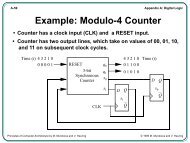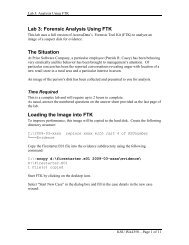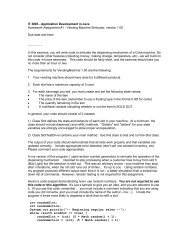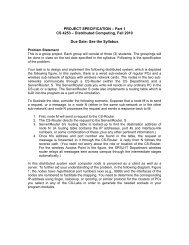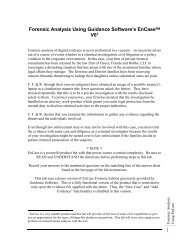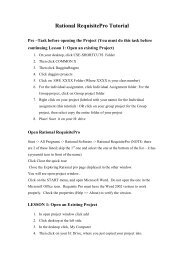Create successful ePaper yourself
Turn your PDF publications into a flip-book with our unique Google optimized e-Paper software.
DRAFT, February 18, 2003, Page 55<br />
Making dependencies visible - On the UML window menu, click on View – Visible Dependencies, then<br />
check or uncheck the items on the list as appropriate. The only two categories of dependencies in the<br />
example project are Inheritance and Other. Inheritance dependencies are indicated by black lines with<br />
closed arrowheads that point from child to the parent to from an is-a relationship. Red dashed lines with<br />
open arrowheads indicate other dependencies. These include the has-a relationship that indicates a<br />
class includes one or more instances of another class. If a class references an instance variable or<br />
method of another class, the red dashed arrow is drawn from the class where the reference is made to<br />
the class where the referenced item is defined. In general, you probably want to make all dependencies<br />
visible. as indicated in Figure 41.<br />
Displaying the Legend - On the UML window menu, click on View – Legend, then set the desired<br />
options. Typically, you will want the following options checked on: Show Legend, Visible Items Only, and<br />
Small Font. Notice, the legend has been visible in the all of UML figures. Before the JDK classes were<br />
excluded (Figure 39), they were included in the legend, but not after the Update. When you initially<br />
generate your UML diagram, you may have to pan around it to locate the legend. Scaling the UML down<br />
(e.g., dividing by 2) may help. Once you locate it, just select it, then drag to the location where you want it<br />
as described in the next section.<br />
Figure 41. Making dependencies visible










